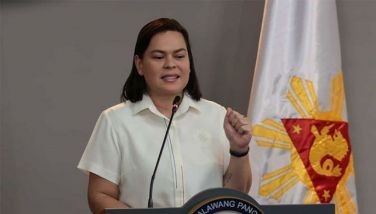Manila cited in passing

CALGARY – The Philippines is casually mentioned as the site of Cathy Townsend’s victory at the World Cup of Women’s Bowling that was held in Manila in 1975 in an exhibit at Canada’s Sports Hall of Fame in Alberta’s largest city and the country’s third biggest municipality. There is no other mention of the Philippines or a Filipino athlete in the 40,000-square foot facility that features 12 galleries, 52 hands-on interactive stations covering 60 sport, a display of over 650 Hall of Famers and a collection of over 100,000 artefacts.
Finding the Sports Hall of Fame isn’t difficult. It’s a landmark in the city, located at Winsports’ Canada Olympic Park, and a proud monument to the achievements of Canadian athletes. The Sports Hall of Fame was established in 1955 and from its original home in Toronto, was relocated to Calgary which won the hosting bid over eight other cities in 2008. The new building was inaugurated in 2011. Calgary hosted the 1988 Winter Olympics. Another Canadian city, Montreal, hosted the 1976 Summer Olympics.
The goal of the Sports Hall of Fame is simple – to inspire Canadians to be the best they can be in sports or any other aspect of life by sharing the success stories of athletes and others involved in the promotion of Canada sports.
The two-level building is easy to navigate. It isn’t a maze of exhibits that will wear down a visitor. The displays are concise and at nearly every turn, there’s a video interactive station waiting to be engaged. More than 650 sports figures have been enshrined, including basketball’s inventor James Naismith, former world boxing champions Tommy Burns, Lennox Lewis and Jimmy McLarnin, pro hockey stars Wayne Gretzky, Gordie Howe, Mario Lemieux, Bobby Orr and Bobby Hull, racehorse Northern Dancer, jockey Ron Turcotte, squash’s Jonathon Power, baseball’s Ferguson Jenkins, alpine skier Nancy Greene and sprinter Donovan Bailey.
Nominations for Sports Hall of Famers are open to all Canadians. The process of selecting the inductees is extensive and follows strict guidelines. Athletes must be retired from their sport at least four years and must have demonstrated exemplary values and personal characteristics with an outstanding resume of achievements and contributions. Coaches, journalists and broadcasters are included in the evaluation. Steve Nash retired from the NBA in 2014 and should be eligible for nomination next year.
The galleries are exquisitely presented. There’s a boat where you can simulate rowing, a monitor where you can shadow box with Lennox Lewis, a wheelchair which you can roll with the guidance of Paralympic racing champion Chantal Petitclerc on video, a hockey goal which you will try to penetrate in a 3D show and simulations in skiing, basketball, baseball and soccer. Canadian national basketball player and NBA center Joel Anthony is the mentor of an interactive teaching station. A special attraction is the media room where guests are able to simulate broadcasting or writing a sports story for a newspaper or magazine.
The artefacts on display are priceless. Naismith’s hand-written basketball rules and the peach basket which was used in the first-ever basketball game are reminders that Canada was instrumental in creating the sport that Filipinos love with a passion. Naismith’s personal copy of the 1916-17 basketball rulebook is shown with his personal notations. Also in the building are Olympic torches spanning over 80 years and Olympic medals dating back to 1924, the official program of the world heavyweight boxing title fight between Ernie Terrell and George Chuvalo at the Maple Leaf Gardens in 1965, boxing boots worn by Hall of Famer Sam Luftspring (a Jew who refused to participate at the 1936 Berlin Olympics), a collection of Olympic mascot dolls, the original boxing bell at the Maple Leaf Gardens, life-size statues of stars like figure skater Barbara Ann-Scott and an 1898 golf club carved out of a tree branch.
The displays are forever in transition as any Sports Hall of Fame and Museum can’t be stagnant. Some omissions are in sports like squash where the exhibit shows only two racquets of different eras and no recognition of Sports Hall of Famer Jonathon Power. In boxing, there is a mammoth black-and-white photo of Chuvalo battling Muhammad Ali but there is no indication of when it happened, where and how the fight ended.
Despite a few shortcomings, it was a wonderful experience to go through the checkered history of Canadian sports. It makes you wonder why the Philippines hasn’t been able to come up with a similarly dynamic and interactive Sports Hall of Fame and Museum. There are bits and pieces of artefacts collected by the PSC and if ever they’re displayed to tell a story in a way to inspire all Filipinos, surely the exhibit will be a lasting remembrance of the achievements of Filipino sports heroes as a source of national pride.
- Latest
- Trending
































